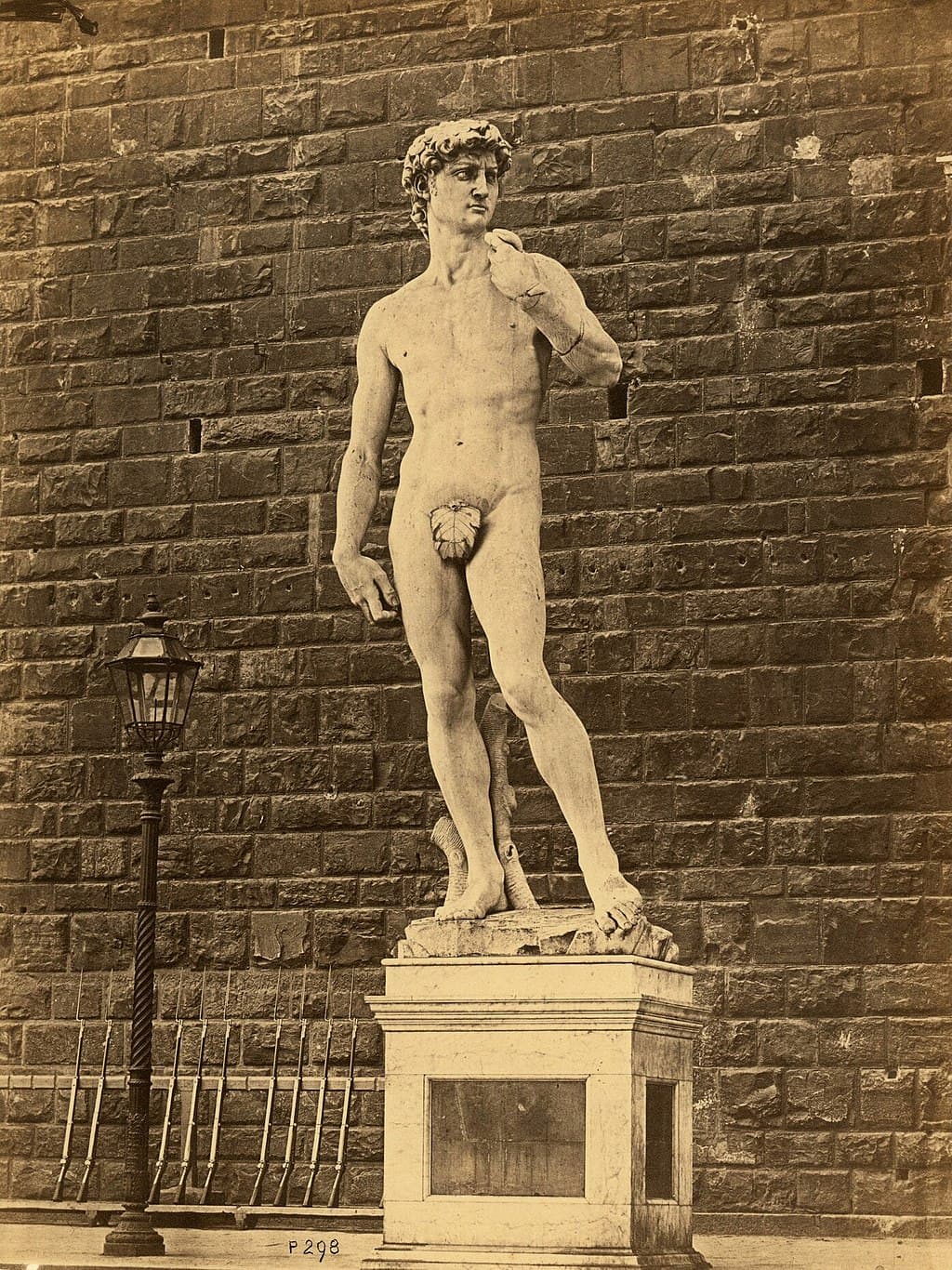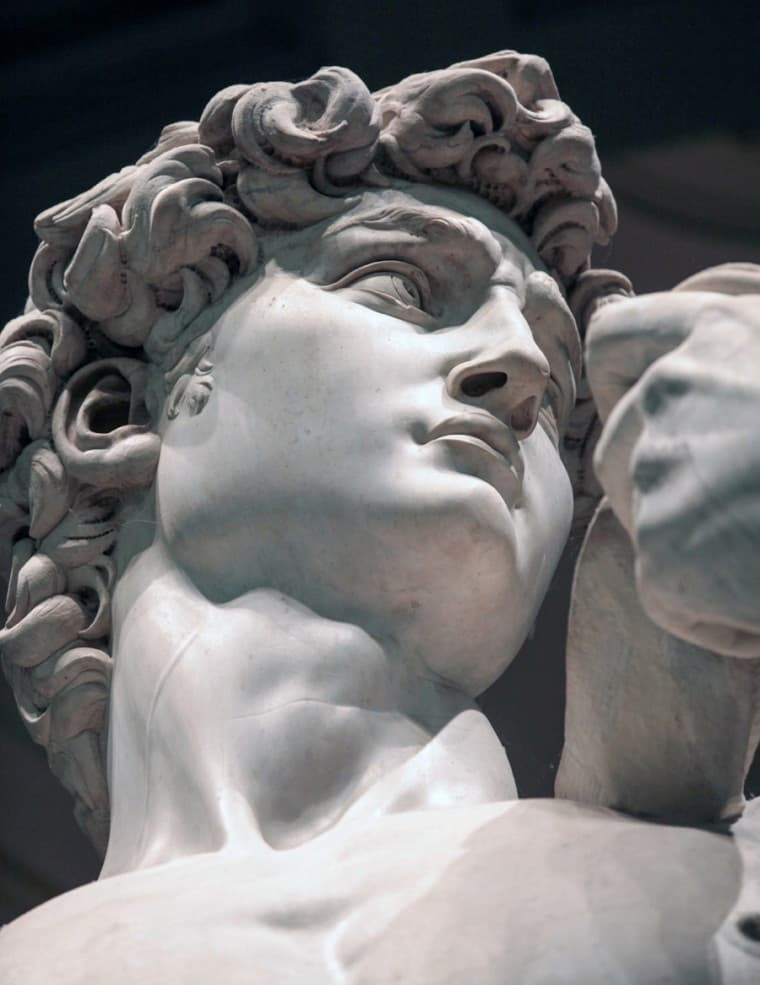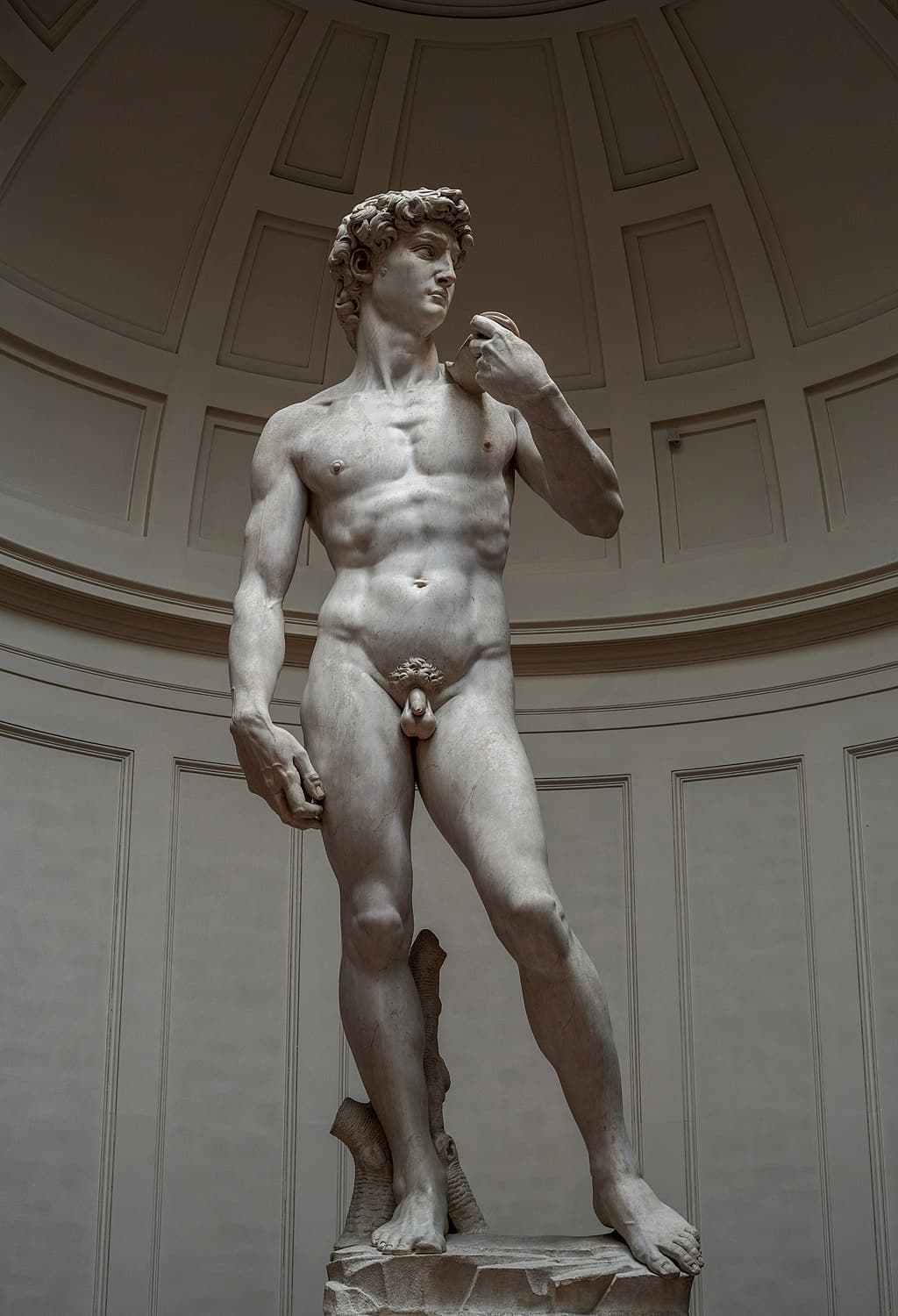Created between 1501 and 1504, Michelangelo’s “David” is perhaps the most famous statue in Florence, if not in the world. When it was finished, “no other artwork, modern or ancient, Greek or Latin, is equal to it in any respect, with such just proportion, beauty and excellence did Michelangelo finish it.” It was officially unveiled on 8 September 1504 in the public square in front of the Palazzo della Signoria, the seat of the civic government in Florence.
Thomas Tomkins: When David Heard
The Commission

Michelangelo’s “David” in its original location, 1873
Renaissance Florence was enamoured with the image of the mythical King David, embodying youth, independence, and strength. In 1464, the Cathedral of Florence commissioned a series of large statues to be positioned in the niches of the cathedral’s tribunes, some 80 meters above the ground. And that particular commission included a statue of David.
Initially, the commission went to the inexperienced Agostino di Duccio, who personally travelled to the quarries of Carrara to select a marble block. Having had no experience with large-scale sculpture, Duccio selected a tall but narrow block full of imperfections, tiny holes, and visible veins. Once the massive block arrived in Florence, Duccio realized his mistake and gave up on the project entirely.
George Frideric Handel: Saul, HWV 53, (David) “O Lord, whose Mercies numberless” (Stephan MacLeod, bass; David Cordier, counter-tenor; Knut Schoch, tenor; Barbara Schlick, soprano; Claron McFadden, soprano; Marcel Beekman, tenor; Gotthold Schwarz, bass; Junge Kantorei; Frankfurt Baroque Orchestra; Joachim Carlos Martini, cond.)
Michelangelo

David’s face
The marble block remained untouched for 10 years until Antonio Rossellino tried to salvage the piece. However, he quickly declared the marble unusable and the block of marble, roughly the size of a 2-story building, spent another 25 years laying around in the courtyard of the Cathedral workshop.
Michelangelo was only 26 years old in 1501, but he was already the most famous and best-paid artist of his day. He accepted the challenge to work on the block of marble inherited from the two other sculptures, and some of the characteristics of the finished “David,” notably his slender and twisted figure, are likely due to the shape of the marble before he started working on it.
Arthur Honegger: Le Roi David, “The Death of David” (Janice Matisse, narrator; Maureen Sorensson, soprano; St. John’s Cathedral Choir; St. John’s Cathedral Orchestra; Donald Pearson, cond.)
The Statue

Michelangelo’s “David” right view
Michelangelo worked on the statue for 2 years, and in breaking with tradition, his David is not portrayed after his victory over Goliath, but before battle. Michelangelo captures David at the height of his concentration, relaxed yet very alert. His entire weight is shifted to one leg, causing the hips and shoulders to rest at opposing angles. He does carry the slingshot over his shoulder, but it is almost invisible. David conveys self-confidence and concentration, essentially the values of a thinking man that was highly praised in the Renaissance.
The statue is disproportionate for probably two reasons. For one, the block of marble was less than ideal, and secondly, the figure was intended to be viewed from below. If you look carefully, you can see that the head, arms, and hands are much larger than the torso and legs. His right hand is especially large, and a recent digital project revealed that David is, in fact, slightly cross-eyed. The left eye looks forward, while the right gazes at a distant point. There is still plenty of argument about whether this was intentional, and if so, what it signifies.
Darius Milhaud: 3 Psalms of David, Op. 339: III Psaumes 114 and 115 (Elmer Iseler Singers; Elmer Iseler, cond.)
Reveal

Michelangelo’s “David” bronze replica
In January 1504, Michelangelo presented his “David” in a private reveal to the members of the Vestry Board. They decided immediately that such a perfect statue should not be placed up high in the Cathedral. And thus a committee was formed that included Leonardo da Vinci and Sandro Botticelli to find an appropriate site. After months of endless debates and discussions of nine different sites, it was finally decided to place David in the political heart of Florence, in the Piazza della Signoria.
A contemporary witness reports, “It was midnight, May 14th, and the Giant was taken out of the workshop. They even had to tear down the archway, so huge he was. Forty men were pushing the large wooden cart where David stood protected by ropes, sliding it through town on trunks. The Giant eventually got to Signoria Square on June 8th, 1504, where it was installed next to the entrance to the Palazzo Vecchio.” Michelangelo kept on working on details of finer finishing until the official reveal on 8 September.
Over the centuries, David has battled earthquakes, lightning strikes, rioters, idiots with hammers, and pigeons until he was moved inside the Galleria dell’Accademia in 1873. Today, you can see a replica in its original location, one of roughly 30 life-sized imitations around the world.
For more of the best in classical music, sign up for our E-Newsletter

